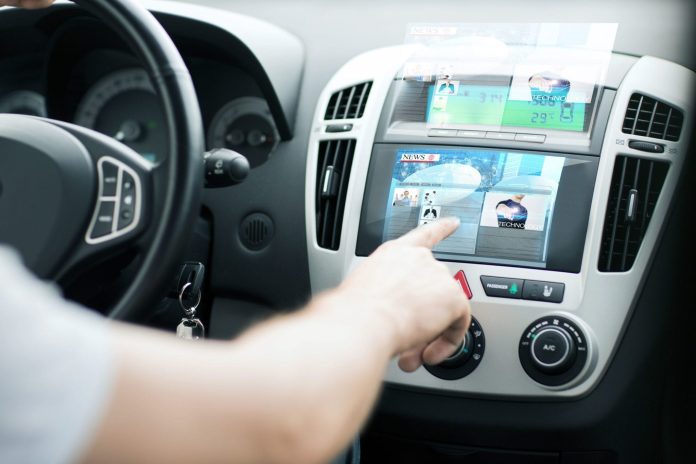The pace of change in connected car technology could quickly render new vehicles obsolete, especially in the age of the internet of things (IoT). With the number of connected “things” expected to reach 20.4 billion by 2020, ensuring that the cars of today are prepared for the connections of tomorrow is a daunting task. The biggest challenge for automakers is that current in-vehicle networks are three decades behind, which creates interoperability, version management, bandwidth and security issues for today’s connected cars and especially the highly automated vehicles of the near future. Rather than continuously struggling to update their cars’ networks to support new features, automakers can “future-proof” their vehicles by standardizing on an Internet Protocol (IP) over Ethernet backbone network architecture.
The power of convergence to IP
In the most basic sense, IP is the networking standard that has enabled businesses in every industry to connect securely and cost effectively. The technology has already proven its value in enterprise IoT, helping organizations converge and consolidate disparate networks to more easily integrate, manage, service and secure the mounting number of connected “things” in the IoT.
For connected cars and highly automated vehicles, IP offers the same benefits. By enabling network standardization, IP over Automotive Ethernet (the lightweight, robust, cost-effective physical medium for IP connectivity in vehicles) brings a host of new capabilities and allows all services, devices and technologies to operate seamlessly. Thus, vehicles can attain the flexibility to keep up with the rapidly evolving technology landscape. The following are a few areas where standardizing on IP over Ethernet can help future-proof the connected car.
Agility: An IP over Ethernet backbone allows automakers and aftermarket providers to essentially “plug and play” new devices, sensors, actuators and other components as they arise – similar to dropping a new printer, building automation system or factory floor machine in the IP connected enterprise. Vehicles can easily be retrofitted or upgraded with the latest and greatest IoT technologies, and there is no need for major design makeovers in the next model vehicle. Standardizing on IP over Ethernet also enables automakers to conduct rapid prototyping, attaching new sensors and devices, seeing what works and what doesn’t, and making adjustments as needed. The result is a shorter innovation cycle and faster roll out of new releases, where automakers can rely on a stable, core in-vehicle architecture that enables them to evolve much faster between model years.
Security: Although automakers cannot see into the future to prepare for every possible security threat, they can reduce risks through IP over Ethernet. Since all communications pass through the backbone and are standardized, the network can analyze and control all traffic. Also, it is possible to introduce tried-and-true security technologies, like intrusion detection and prevention, credentialing, access controls and more, to keep the connected car, its data and its drivers safe and private. Finally, as new threats appear, automakers can quickly make over-the-air (OTA) updates to protect their vehicles.
Compute and bandwidth: Highly automated connected cars will generate up to four terabytes of data per hour. Although current networks suffice for basic telematics and control, they are inadequate for the next-generation of connected car features and capabilities. IP over Ethernet can increase bandwidth by a factor of 1,000 or more, so connected vehicles will have the power and flexibility to bring on new connections. This will also help pave the way for self-driving cars that will need extremely fast, real-time data transfer to stream high-definition video and avoid collisions. Moreover, IP enables virtualization and consolidation of compute and storage within the vehicle. Some have called the vehicle a data center on wheels or even a small enterprise on wheels, and the same virtualization that benefitted the enterprise can be applied in the car. Virtualization can eliminate redundancy across electronic control units (ECUs) and reduce their number. It can also provide a means to further future-proof the vehicle through a central compute and storage resource that is expandable to meet the demands of tomorrow’s highly intelligent vehicles.
Costs: Even though cars are becoming more sophisticated, costs don’t have to rise for automakers and consumers. In fact, standardizing on IP over Ethernet can reduce costs throughout the vehicle’s lifecycle. By replacing a messy hodgepodge of wiring and other antiquated networking components, an IP over Ethernet backbone creates a much lighter vehicle – reducing wiring weight by as much as 50 percent. This can lead to better fuel economy, more affordable vehicles, a streamlined manufacturing process and easier maintenance, now and into the future.
By standardizing in-vehicle networks with IP over Ethernet, automakers have the flexibility to introduce new connected car features, test them, secure them, push them out and even update them as needed. Future-proofing the connected car is no longer a seemingly impossible feat, and consumers will be able to enjoy safer, more reliable, secure and convenient driving experiences in the years to come.

